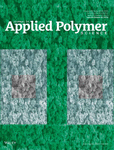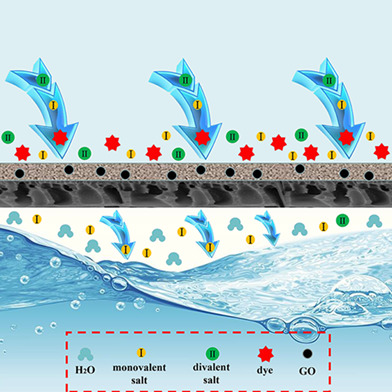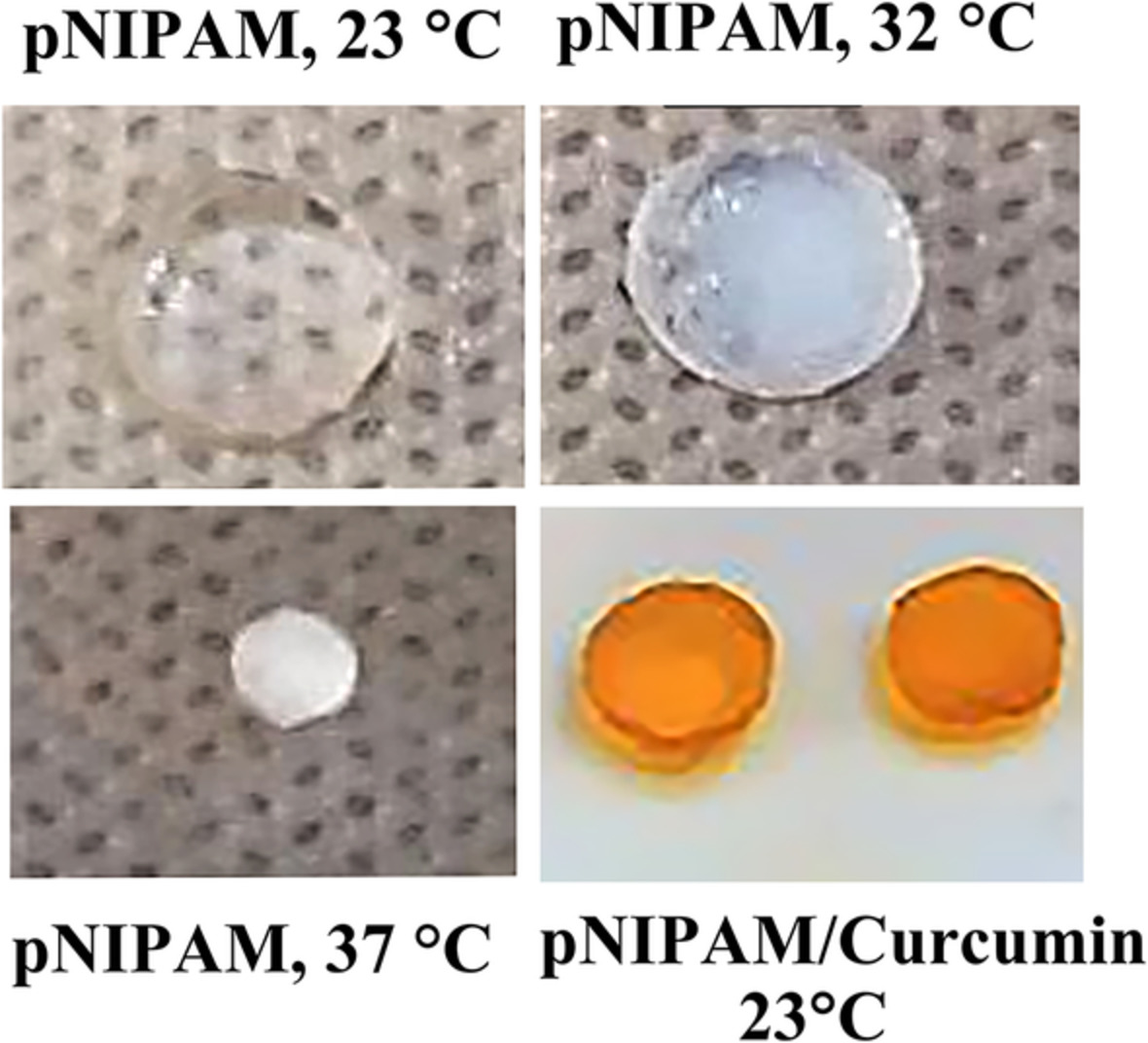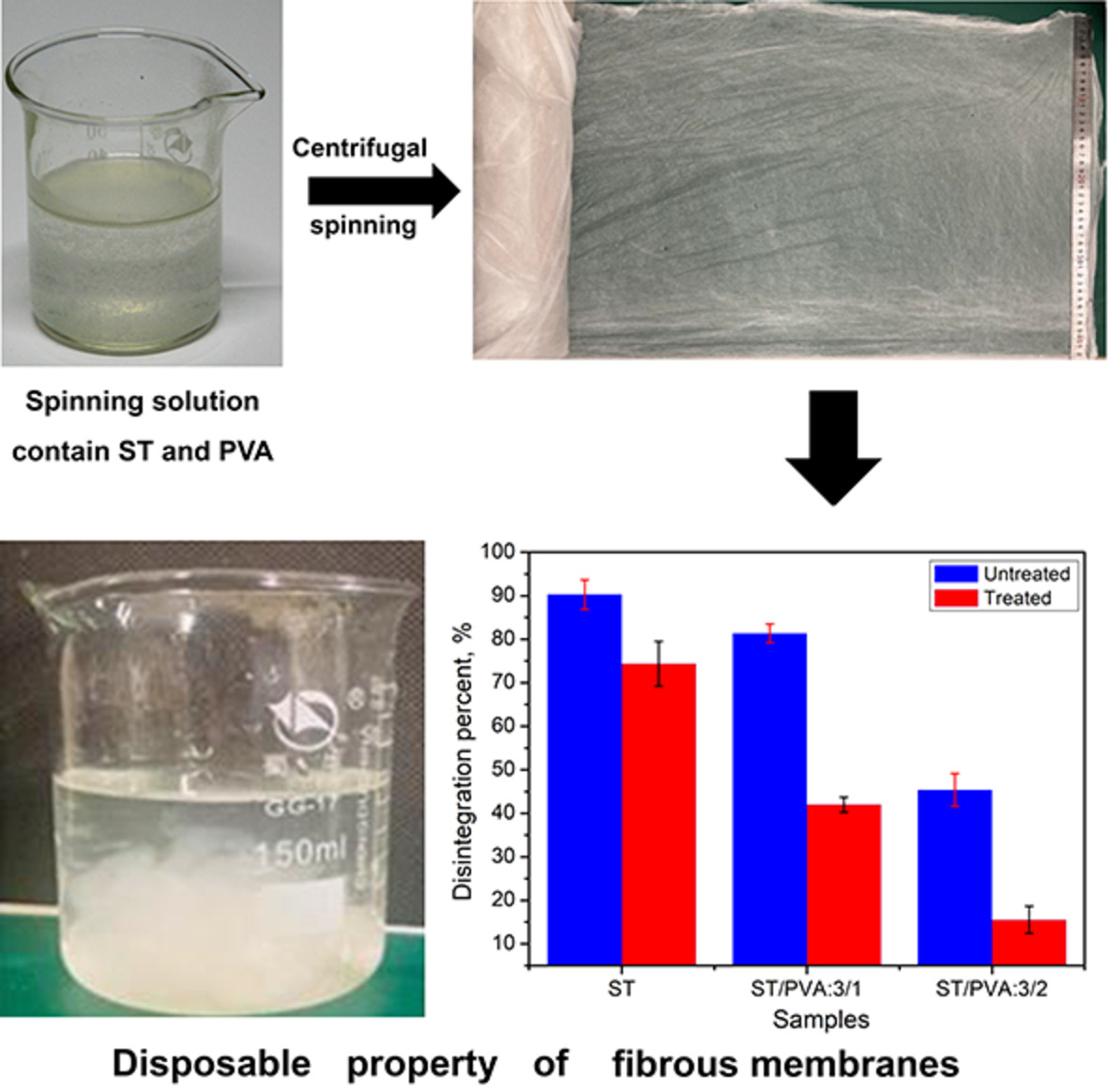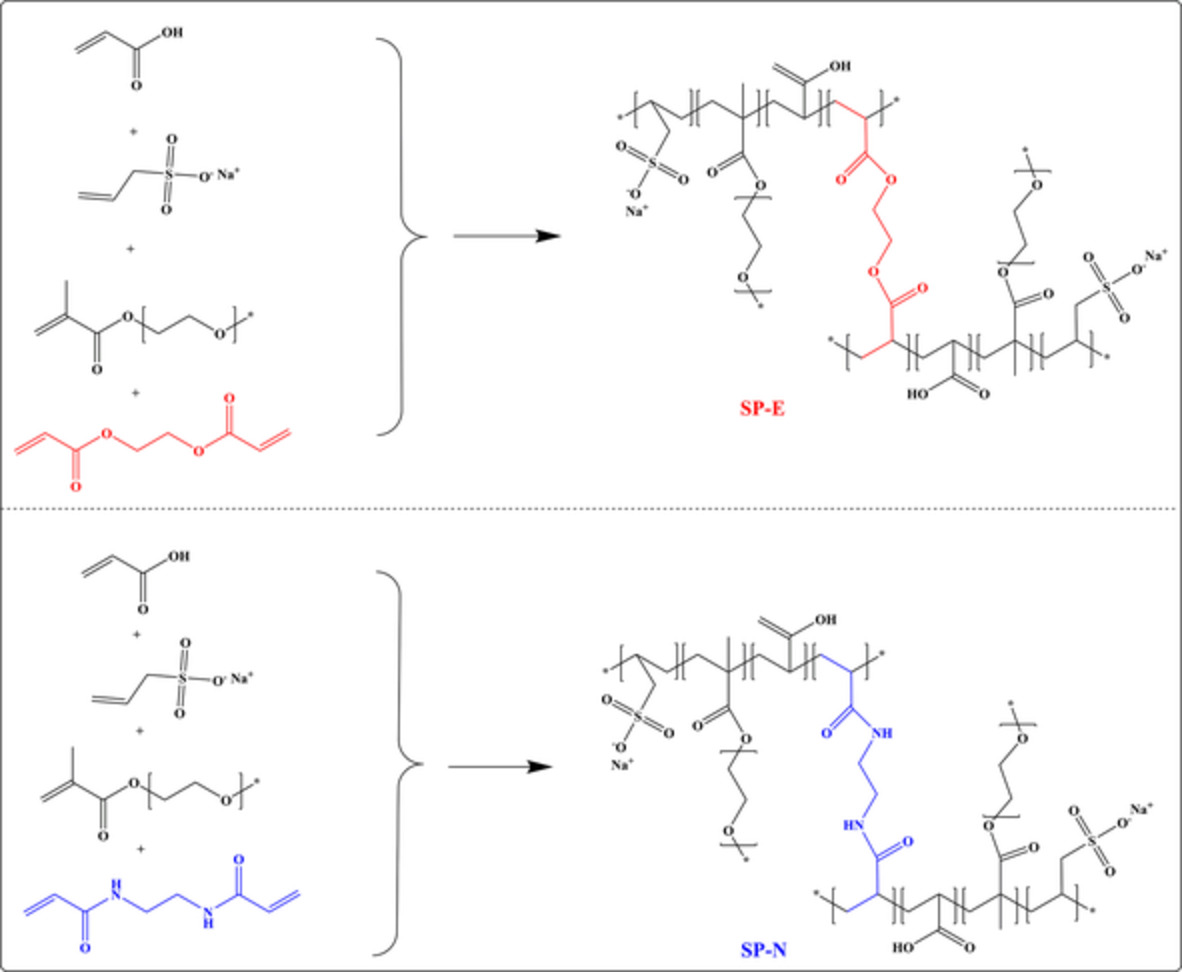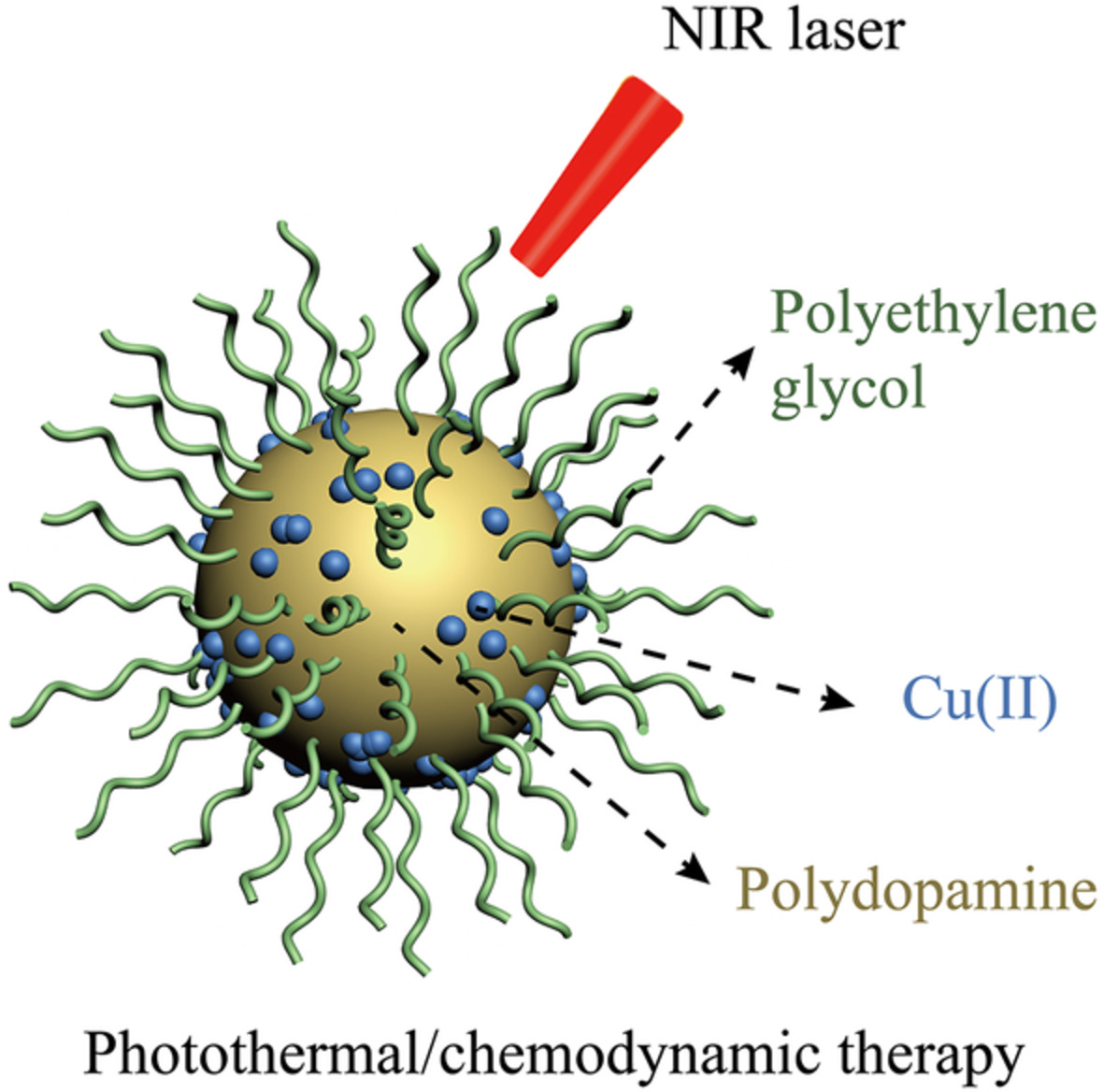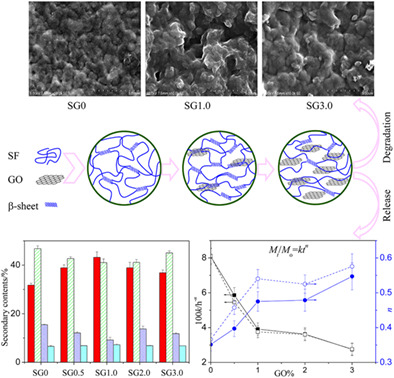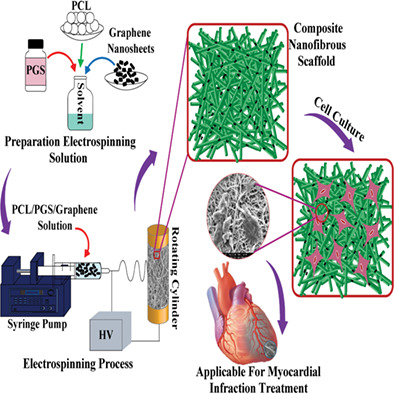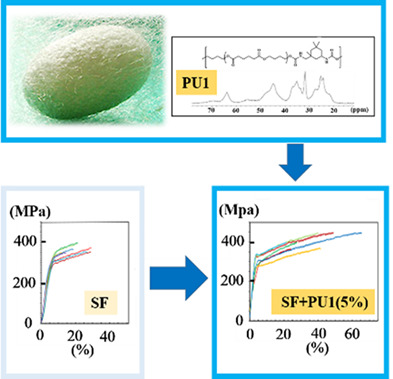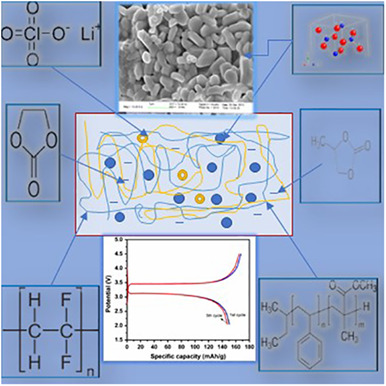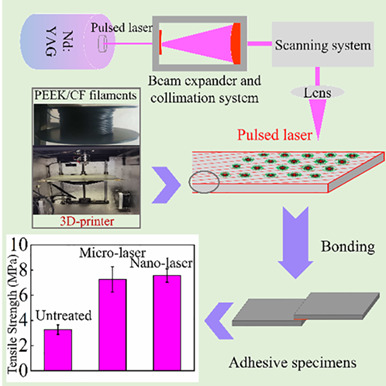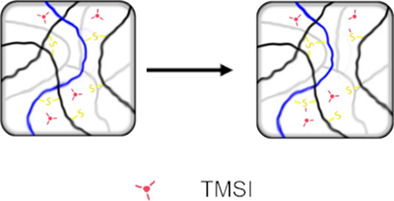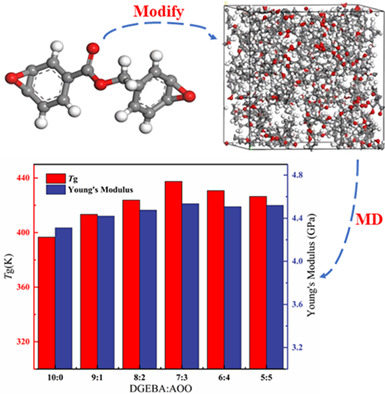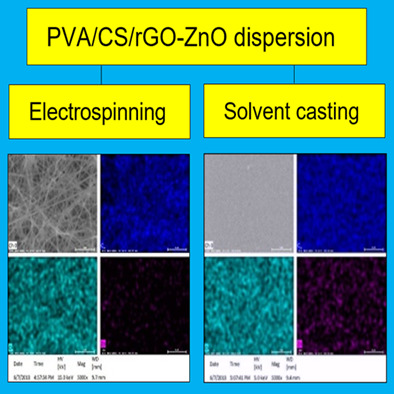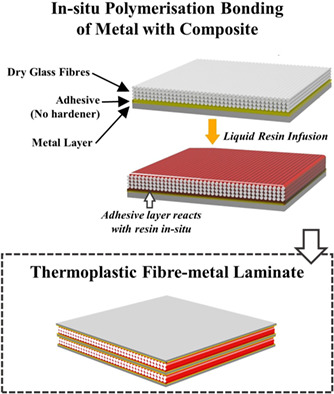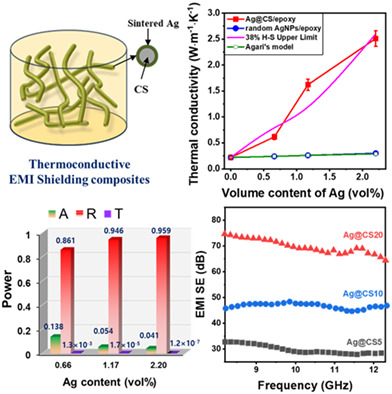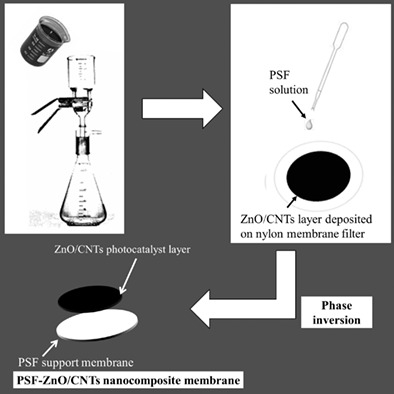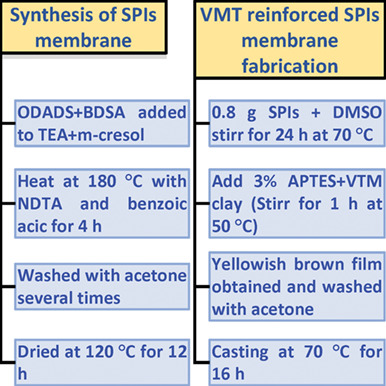Journal list menu
Export Citations
Download PDFs
COVER IMAGE
Cover Image, Volume 138, Issue 40
- First Published: 16 July 2021
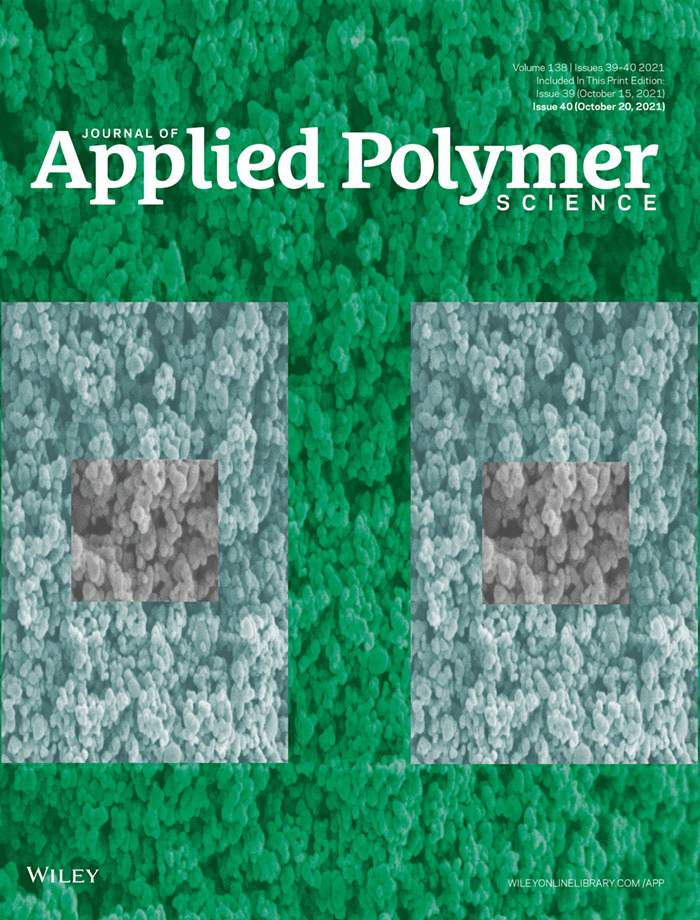
The cover image by Muhammad Bilal and colleagues shows an SEM micrograph representing the fractured surface of clay reinforce sulfonated polyimide nanocomposite. The SPI membrane characterizes a homogenous morphology throughout the matrix due to the uniform distribution of clay nanoparticles with no pore or cracks. The uniform distribution and proper dispersion of nanofillers are due to the functionalization of vermiculite clay, as the NH2 group of 3-APTES makes contact through covalent linkage with the SO3H group of SPIs matrix. However, these linkages between organicinorganic moieties might affect the properties of composites film. DOI: 10.1002/app.51310
ISSUE INFORMATION
ARTICLES
Preparation of graphene oxide/polyamide composite nanofiltration membranes for enhancing stability and separation efficiency
- First Published: 15 June 2021
Preparation and characterization of tough and highly resilient nanocomposite hydrogels reinforced by surface-grafted cellulose nanocrystals
- First Published: 20 May 2021
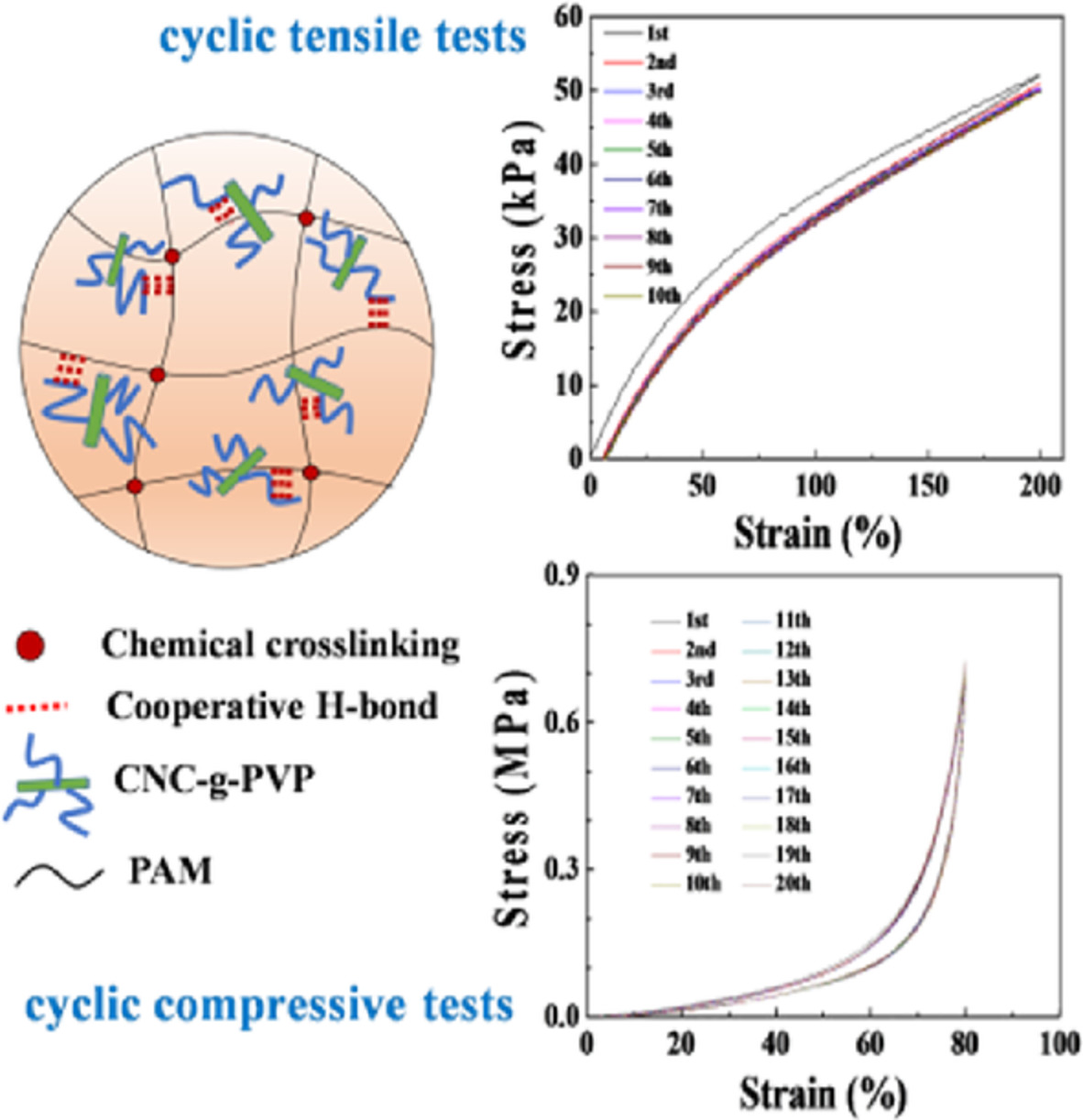
The PAM/CNC-g-PVP nanocomposite hydrogels were hybrid crosslinked by covalent bonds and robust cooperative hydrogen bonds. The cooperative hydrogen bonds can rupture to dissipate energy upon deformation and recover instantly on the removal of stress in the elastic PAM matrix, leading to low hysteresis, high toughness, and resilience of the hydrogels.
A rechargeable drug delivery system based on pNIPAM hydrogel for the local release of curcumin
- First Published: 24 May 2021
Dielectric properties of PMMA/KCTO(H) composites for electronics components
- First Published: 21 May 2021
Centrifugally spun starch/polyvinyl alcohol ultrafine fibrous membrane as environmentally-friendly disposable nonwoven
- First Published: 20 May 2021
Investigation of the decomplexation of polyamide/CaCl2 complex toward a green, nondestructive recovery of polyamide from textile waste
- First Published: 20 May 2021
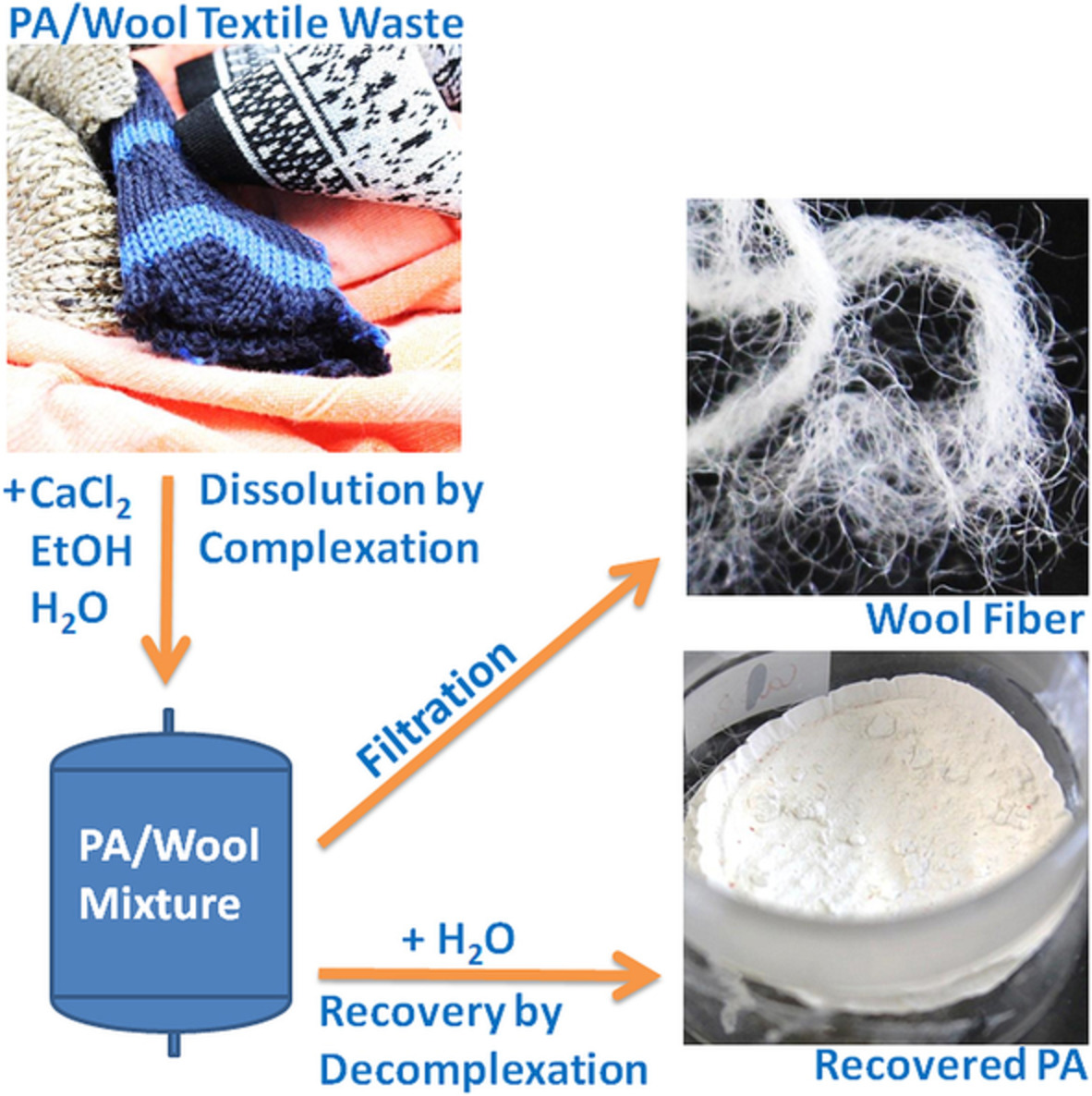
The investigation of the process of complexation and decomplexation of polyamide demonstrates great potential as sustainable green approach in the separation and recovery of polyamide fiber from polyamide containing mixed textile waste. The nondestructive approach is based on the selective dissolution of polyamide fibers by the complexation using mixtures of calcium chloride, ethanol, and water, followed by the decomplexation and recovery of nondegraded polyamide by removing calcium ions through rinsing with water.
Effects of crosslinked polycarboxylate superplasticizers with crosslinking agent containing ester and amide groups on the properties of cementitious systems
- First Published: 24 May 2021
PEGylated copper(II)-chelated polydopamine nanocomposites for photothermal-enhanced chemodynamic therapy against tumor cells
- First Published: 22 May 2021
Enzymatic degradability and release properties of graphene oxide/silk fibroin nanocomposite films
- First Published: 25 May 2021
Effect of metal oxides added onto polyvinyl alcohol via pulsed underwater plasma on their thermal, electrical and dielectric properties
- First Published: 21 May 2021
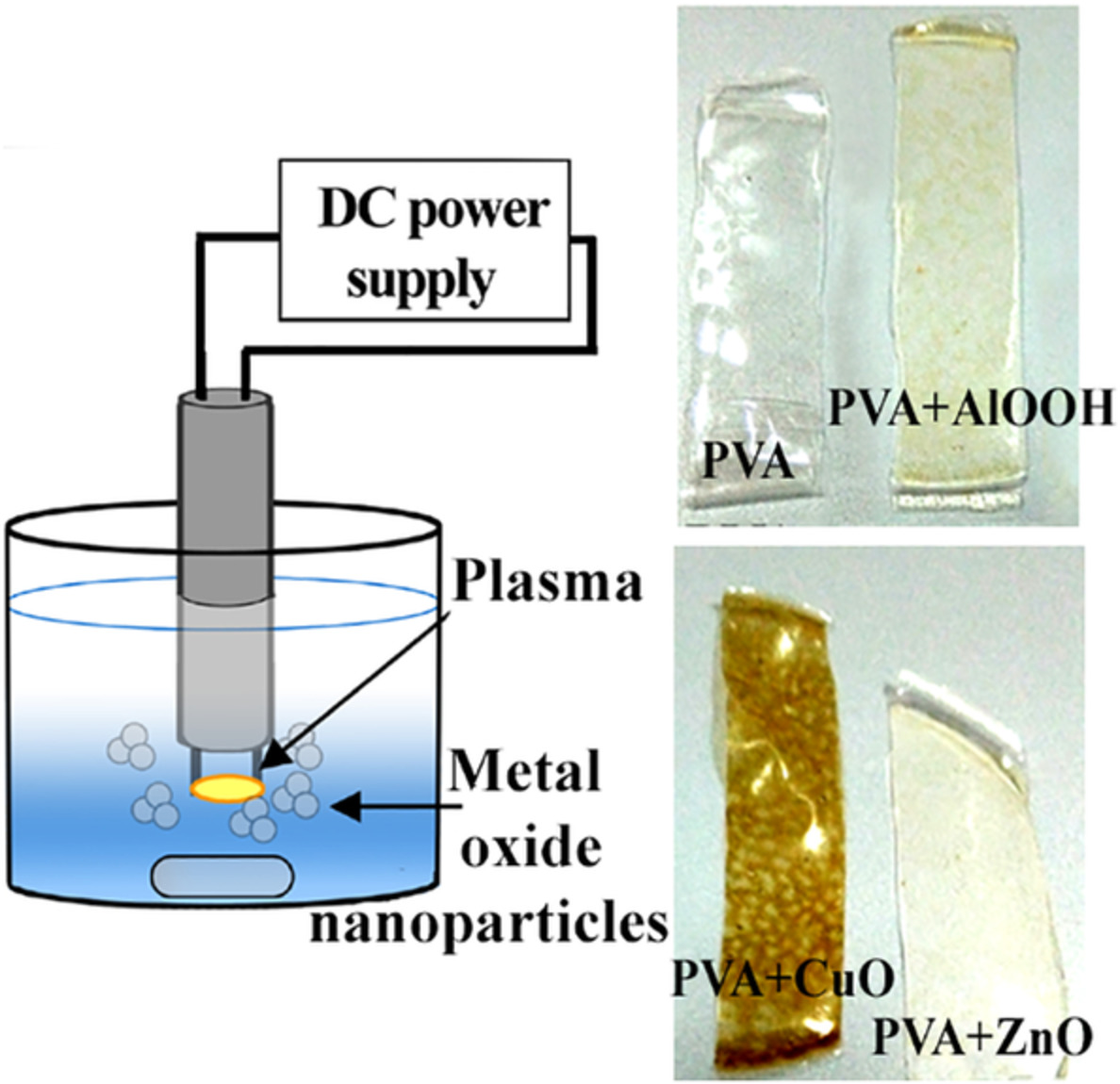
Polymer composites based on polyvinyl alcohol and metal oxides (AlOOH, CuO, and ZnO) were obtained by a new one-stage method using underwater plasma. Metal oxides are formed in the plasma zone and are incorporated during the plasma treatment. The composites obtained show nonlinear current–voltage characteristics and have a high dielectric constant.
Selective localization of organophilic clay Cloisite 30B in biodegradable poly(lactic acid)/poly(3-hydroxybutyrate) blends
- First Published: 20 May 2021
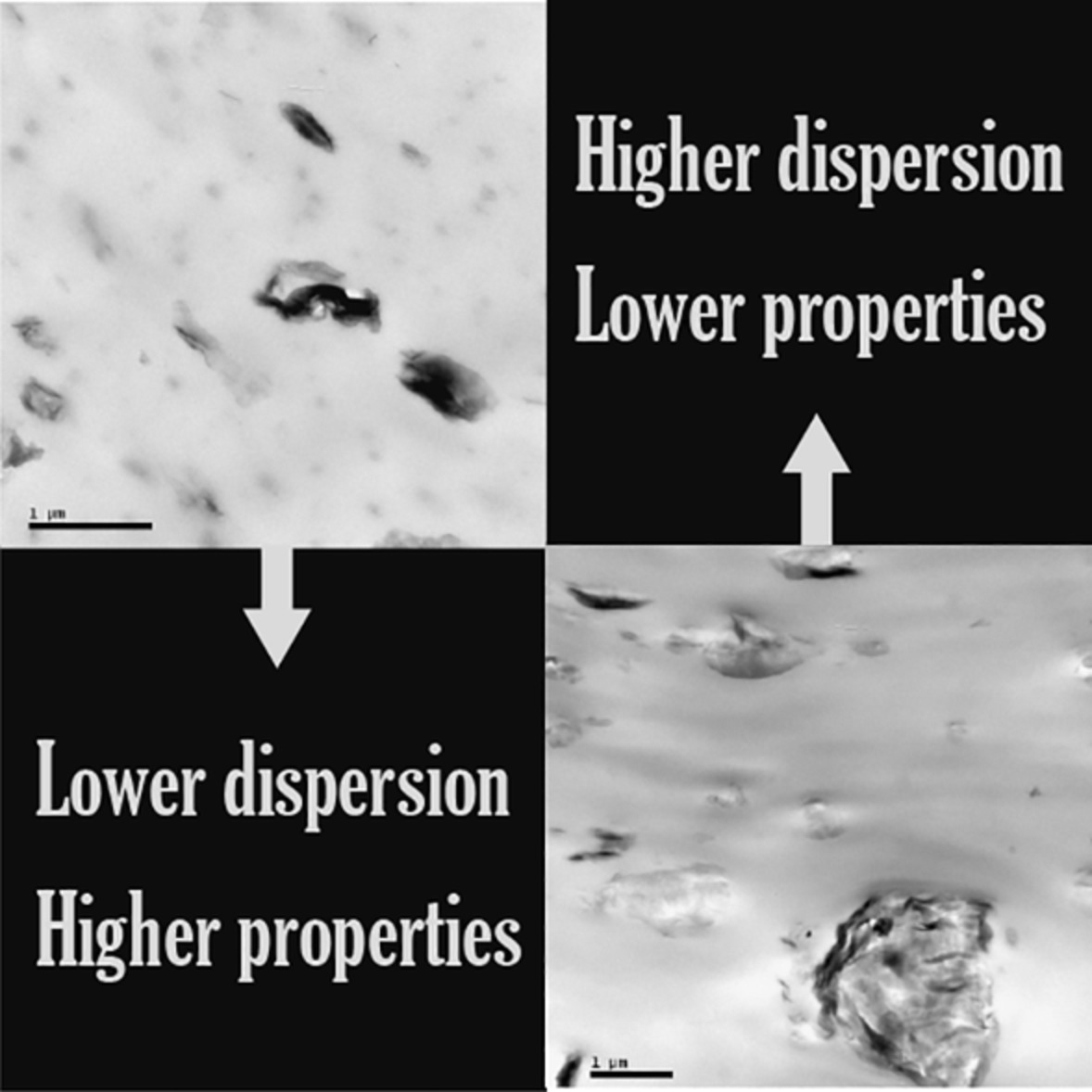
Polymer blends containing nanoparticles, which generally have better properties attributed to good dispersions, can exhibit the opposite behavior when there is low miscibility between the phases. In this case, nanoparticles that are poorly distributed, but can be arranged in a layer between the phases, can reduce the surface stress of the mixture and improve its thermal and thermomechanical properties.
Biocompatible graphene-embedded PCL/PGS-based nanofibrous scaffolds: A potential application for cardiac tissue regeneration
- First Published: 07 June 2021
Structural investigations of polyurethane and silk-polyurethane composite fiber studied by 13C solid-state NMR spectroscopy
- First Published: 31 May 2021
Electrochemical analyses of ZrO2 dispersoid incorporated poly (styrene-methyl methacrylate) blend gel electrolytes for lithium-ion battery
- First Published: 07 June 2021
Effect of IR-laser treatment parameters on surface structure, roughness, wettability and bonding properties of fused deposition modeling-printed PEEK/CF
- First Published: 31 May 2021
Based on transalkylation reaction the rearrangeable conventional sulfur network facile design for vulcanized diolefin elastomers
- First Published: 26 May 2021
Molecular dynamics study on thermal and mechanical properties of AOO modified DGEBA-anhydride insulating materials for high voltage GIS
- First Published: 27 May 2021
Synthesis and application of new macromolecular hindered phenol antioxidants of polyamide 6
- First Published: 27 May 2021
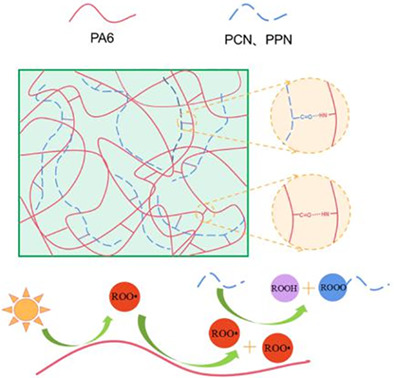
Phenolic hydroxyl, a free radical trap on macromolecular antioxidant PCN and PPN, reacts with peroxy radical or alkoxy radical generated by PA6 amide group due to thermal oxidative aging, which is consumed to form a stable compound, so that the reaction that free radical takes hydrogen to break the molecular chain can not continue, thus protecting the polymer chain from such free radicals and delaying the thermal oxidative aging of nylon.
Modification of advanced Takayanagi model for the modulus of nanoclay/polymer systems comprising the effectual networks of both nanoclay and interphase section
- First Published: 27 May 2021

We focus on the effectual features of interphase net using clay properties and interphase/interfacial factors to progress the Takayanagi model for the modulus of clay-reinforced systems. The effectual loading of interphase district in the samples and the percolation onset define the portion of interphase area in the net. The forecasts of the model are associated to the experiential quantities of several examples and the roles of whole factors in the modulus are justified.
Flexible dielectric ZnO-doped reduced graphene oxide bionanocomposites from solution blending for potential application in bio-related devices
- First Published: 28 May 2021
Effect of modified layered double hydroxide on the flammability of intumescent flame retardant PP nanocomposites
- First Published: 31 May 2021
Interlayer bonding between thermoplastic composites and metals by in-situ polymerization technique
- First Published: 29 May 2021
Influences of different imidization conditions on polyimide fiber properties and structure
- First Published: 08 June 2021

By the wet-spinning method, the co-PI fiber with excellent mechanical and dielectric properties was obtained in the present work, which exhibited a tensile strength of 2.61 GPa and modulus of 86.7 Gpa as well as a low dielectric constant and a dielectric loss factor of 2.7463 and 0.00793 at 10 GHz, respectively. The correlation between properties and the microstructure of co-PI fibers revealed that the hydrogen-bond associations and the microvoids structure were highly affected by imidization conditions.
Preparation of highly reflective silver metallized PVC film by autocatalytic deposition
- First Published: 05 June 2021
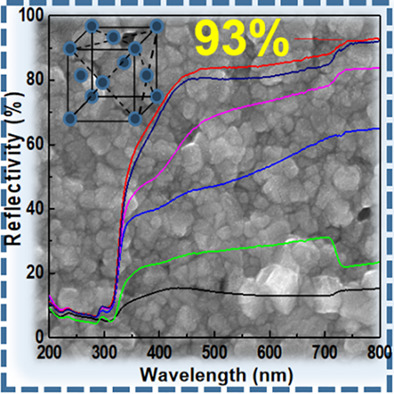
In this paper, a two-step autocatalytic deposition method was adopted to prepare the Ag/PVC composite film with high reflectivity. First, the PVC surface was introduced palladium (Pd) to provide a catalytic center for deposition. Then, Ag particles were deposited on the treated PVC film surface. Pd metal was introduced as the catalytic center for Ag deposition to promote the formation of face-centered cubic crystals, thereby obtaining a highly reflective PVC film.
Synthesis and modification of silica-based epoxy nanocomposites with different sol–gel process enhanced thermal and mechanical properties
- First Published: 27 May 2021
Relationship of color change to permeation of target compound in polydiacetylene vesicle system
- First Published: 27 May 2021
In situ sintered silver decorated 3D structure of cellulose scaffold for highly thermoconductive electromagnetic interference shielding epoxy nanocomposites
- First Published: 07 June 2021
Fabrication of asymmetric zinc oxide/carbon nanotubes coated polysulfone photocatalytic nanocomposite membrane for fouling mitigation
- First Published: 29 May 2021




